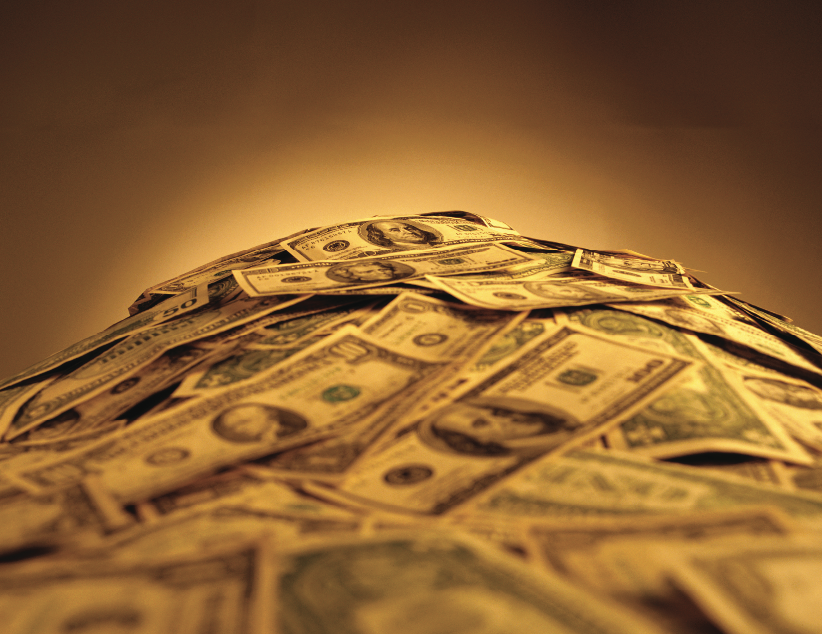The US dollar may still be king in terms of foreign-exchange reserves and denomination of international transactions, but the American currency is no longer absolute monarch of the global economy. The yawning US trade deficit and a huge overhang of debt denominated in greenback are causing concern regarding its reserve currency status. Since the middle of the 20th century, most countries have held the majority of their foreign exchange reserves in dollars. This means that the greenback is constantly in demand, whatever the underlying need for US products; now, with massive trade and budget deficits to finance, Americans are increasingly reliant on that status. The unprecedented weight of US liabilities means that a threat to the dollar’s dominance could result in a currency collapse.
Under present conditions, can dollar hegemony last? The Russians for one don’t think so, having since last spring openly questioned the greenback’s pre-eminence as the world’s reserve currency. At that time, Russia’s central bank held 60% of its reserves in dollars, 33% in euros and 7% in British pounds, but has since been busily diversifying, including an increase in Japanese yen holdings to several percentage points. The share of the yen in global foreign exchange reserves had declined to under 4% by the end of 2005 from over 6% at end-1999. However, with the Japanese currency looking undervalued, Russia, among others, may be adding more of it to their reserves and end-2006 global figures for official yen holdings should see them rising closer to late 90s levels.
With the world’s third largest official foreign exchange holding, which grew over 50% last year, Russia’s challenge to the dollar’s supremacy has fuelled speculation that other central banks could increasingly diversify. That in particular includes China, which is shifting away from dollars, a highly significant move as Chinese have the world’s largest reserves, about a trillion dollars at the end of 2006 and growing at a rate of $30 million an hour. Other Asian central banks have lost their appetite for holding dollars, with Japan also moving out of US debt instruments. Elsewhere in the world, Sweden in 2006 cut its dollar holdings from 37% of central bank reserves to 20%, with the euro’s share rising to 50%. Some OPEC countries are unloading US Treasuries at the fastest pace in more than three years; in particular, Iran in 2006 pledged to move its reserves away from the US dollar and into currencies such as the euro. Closer to home, Syria has just announced that it replaced the dollar with the euro for half of its foreign currency reserves. Given the tension between Washington and Damascus, such a move had been foreseen for some time, especially as the Syrian government at the start of 2006 issued an official circular instructing all ministries and state companies to adopt the euro instead of the dollar for foreign transactions. However, decisions such as these are not made just on the strength of emotional or diplomatic considerations: it is economically and financially smart for Syria to shift into euros, irrespective of the political correctness of the move. By the same token, what should be interesting to watch in 2007 will be how the central banks of other Arab countries, including Lebanon and Jordan, with local currencies pegged to the dollar and strong political ties to Washington, are able to move away from over-reliance on greenback reserves.
Arab banks cutting back on dollar reserves
However, whatever the Arabs do, the trend against the dollar is clear and possibly permanent. There are now more euros banknotes and coins in circulation worldwide than dollars, but the greenback remains the world’s most important reserve currency, though less significant than in the ’90s. The dollar’s share of global reserves dropped to under 67% at the end of 2005 from 71% in 1999, while the euro’s portion increased during the same period to over 24% from under 18%. Today, it is estimated that about 65% of foreign central bank exchange reserves are held in dollars, versus around 25% in euros, with the dollar exchange rate weakening 10% against the euro over the past year. The rise of gold is yet another sign that the dollar is not what it used to be. After central banks in various countries unloaded the yellow metal back in the ’90s, it is now making a comeback.
As the rest of the world continues to abandon the dollar as the global reserve currency, Americans will find borrowing more expensive. The US can maintain a large trade deficit only if foreigners continue to hold large numbers of dollars as their reserve currency, and that looks increasingly unlikely. Though holding a drop in the ocean of world reserves, the Syrians seem to have got it right, but how long will America’s friends in other Arab capitals continue to prop up the US consumer by holding on to dollar reserves? What the Saudis and their neighbors do with their dollars will mean a lot to America in 2007 as other countries continue to abandon the greenback.
RIAD KHOURY is an economist director of MEBA Ltd Amman and a senior associate at BNI, Inc. New York.










